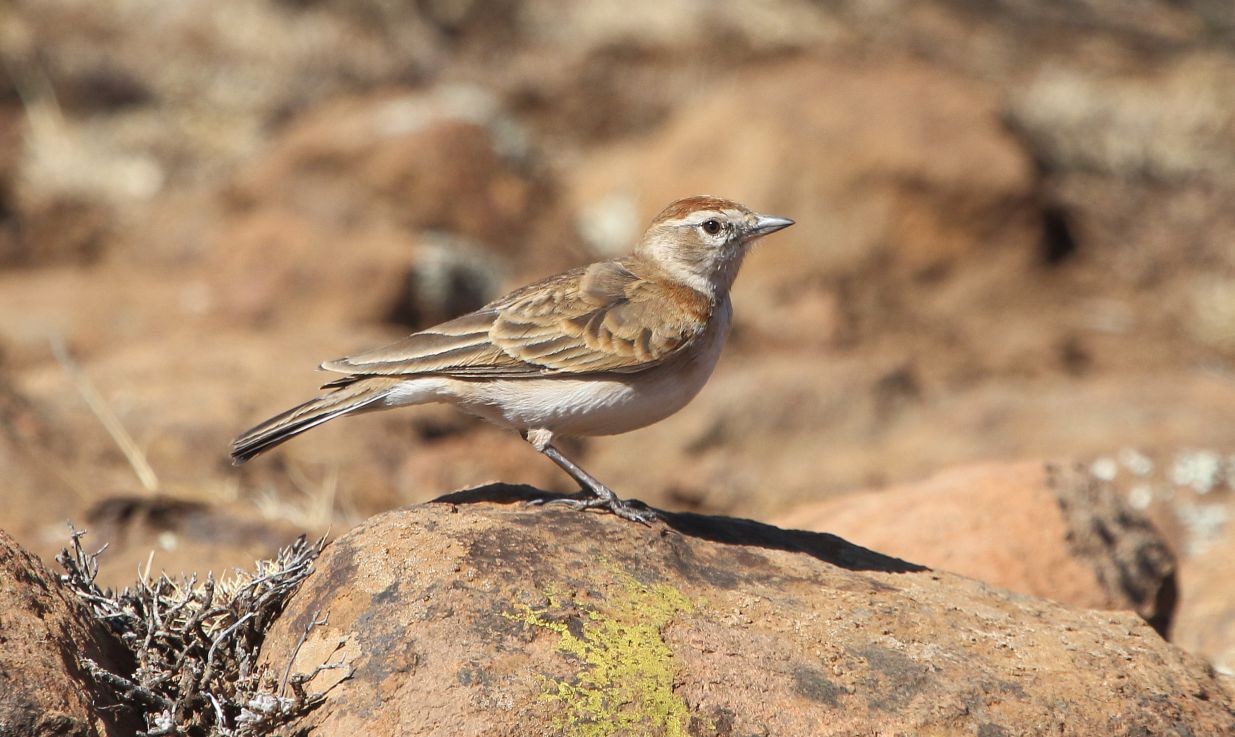Red-capped Lark
A species of Greater Short-toed Larks and Allies Scientific name : Calandrella cinerea Genus : Greater Short-toed Larks and Allies
Red-capped Lark, A species of Greater Short-toed Larks and Allies
Botanical name: Calandrella cinerea
Genus: Greater Short-toed Larks and Allies
Content
Description General Info
 Photo By Alandmanson , used under CC-BY-SA-4.0 /Cropped and compressed from original
Photo By Alandmanson , used under CC-BY-SA-4.0 /Cropped and compressed from original Description
The red-capped lark is a 14- to 15-cm-long bird, with a typically upright stance. The colour of the streaked grey to brown upperparts is variable, with subspecies differing in hue and brightness, but this species is easily identified by its rufous cap, white underparts, and red shoulders. The short head crest is normally not noticeable except when it is raised during courtship displays. The male has redder plumage and a longer crest than the female. Juveniles lack the red cap and shoulders of the adults, have dark spotting on the breast, and white spots on the dark brown upperparts. The call of the red-capped lark is a tshwerp like a sparrow, and the song, given in the display flight, is a jumble of melodious phrases treee, treee, tip-tip, tippy, tippy tippy. It also imitates other birds. 
Size
15 cm
Nest Placement
Ground
Feeding Habits
Red-capped Lark primarily consume seeds and insects, utilizing ground foraging and brief aerial pursuits. Diet includes grass seeds, caterpillars, grasshoppers, beetles, and termites. Grit is ingested to aid digestion, and water visits are regular in arid areas. Chicks are fed exclusively on insects.
Habitat
The red-capped Lark thrives in open grasslands and disturbed habitats, including harvested fields and areas with clayey, poorly drained soils. It favors environments with short grass, often near wetlands and coastal lagoons, and is found from sea level to high-altitude regions. This species also utilizes roadsides for foraging and migrates to bare areas for roosting.
Dite type
Insectivorous
General Info
Feeding Habits
Bird food type
Behavior
The red-capped lark breeds all year round, but mainly from September to December. The nest is a deep, open cup which is set into the ground and usually situated close to a grass tuft, stone or mound. The nest is lined with fine grass and rootlets. The red-capped lark forages on bare ground or in very short grass, moving with short runs to feed on seeds and insects. It is sometimes found in flocks which can number hundreds of birds. 
Distribution Area
This is a species of short grassland including fallow agricultural areas. In eastern Africa, it is found in the highlands, normally above 1000 m, but it occurs down to sea level in suitable habitat in the cooler south of its extensive range. 
Species Status
Not globally threatened.